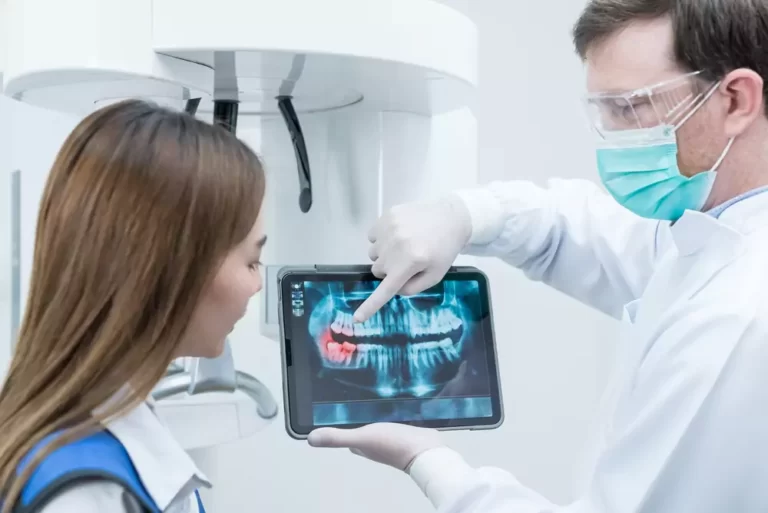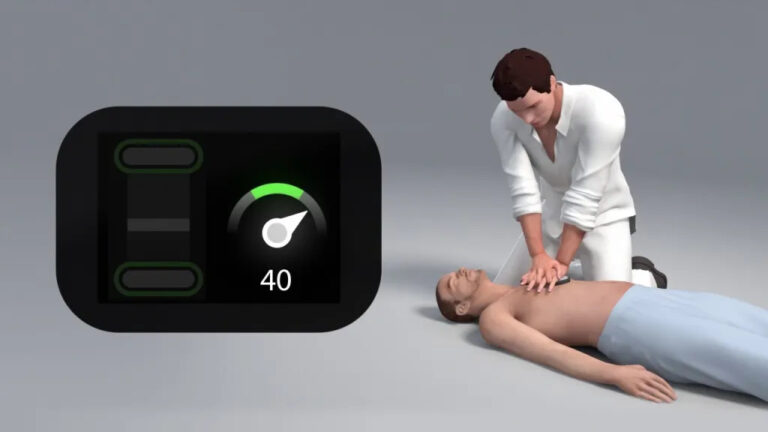Cavity Between Teeth: Signs and Treatment
The most prevalent dental issue that can afflict people of all ages is cavity. They are brought on by tooth decay, which occurs when oral bacteria break down sugars and release acids. Cavities can form on any tooth surface, but they are common between the teeth and can cause pain if left untreated.
The following article will explain what interproximal cavities are, what are the signs and symptoms of having one, and how you can prevent them from forming in the first place.
What is a Cavity?
A cavity is a hole or a pit in the tooth caused by tooth decay. Tooth decay is a progressive process that involves four stages:
- Demineralization: The enamel loses minerals due to acid attacks from bacteria.
- Enamel decay: The enamel becomes weak and porous, allowing bacteria to go deeper into the tooth.
- Dentin decay: The dentin, the second layer of the tooth under the enamel, becomes infected and inflamed.
- Pulp decay: The pulp, the innermost layer of the tooth with nerves and blood vessels, becomes infected and necrotic.
Why Are Cavities Between Molars Harder to Prevent?
Cavities between molars are harder to prevent because they are less visible and more difficult to clean than cavities on other surfaces of the teeth. Molars are the back teeth that are used for chewing and grinding food. They have multiple cusps (points) and grooves (fissures) that create spaces between them.
Plaque is a gummed film of bacteria that adheres to the teeth and produces acids. Food debris provides fuel for the bacteria to multiply and produce more acids.
Brushing alone is insufficient to remove plaque and food debris between the molars. Flossing or using other interdental cleaning devices is essential to reach these areas. However, many people neglect to floss regularly, leaving their molars vulnerable to decay.
Signs and Symptoms of a Cavity Between Teeth
Interproximal cavities may not cause symptoms initially, especially if they are small and confined to the enamel. They may only be detected by dental X-rays or visual examination by a dentist.
However, as the cavity grows larger and deeper, it may cause some of these signs and symptoms:
Tooth Sensitivity
You may feel a sharp pain when you consume something hot, cold, or sweet. The enamel has been eroded and exposed to the dentin, which contains tiny tubules.
Toothache
You may feel a constant pain in your tooth that worsens when you bite down or chew. The cavity has reached the pulp and caused inflammation and infection.
Dark Spots or Holes
You may see brown, black, or white stains on your tooth surface or notice a visible hole between your teeth. It is because decay has destroyed the enamel.
Plus
You may see pus oozing from your gum around your tooth. It is because the infection has spread from your pulp to your bone and soft tissues, forming an abscess.
Treating Cavities
The treatment for interproximal cavities depends on their size, location, and severity. Your dentist will examine your teeth with X-rays and clinical tests to determine the best action.
Some of the possible treatment options include:
Remineralization
If the cavity is small and limited to the enamel, your dentist may apply fluoride gel or varnish to your tooth to help restore the lost minerals. You may ask to use fluoride toothpaste, mouthwash, or supplements at home to prevent further decay.
Filling
If the cavity has reached the dentin, your doctor will drill out the decayed part of your tooth and then fill the gap with composite resin, amalgam, gold, or porcelain. A filling protects the pulp from germs.
Root Canal
If the cavity has reached the pulp, your doctor will perform a root canal treatment to save your tooth. It involves removing the infected pulp tissue, cleaning the root canal, filling it with a rubber-like material, and sealing it with a filling or a crown.
Crown
A crown is a cap that completely covers your tooth’s visible surface. Typically, it is composed of porcelain, metal, or a combination of the two. A crown can empower a tooth with a root canal procedure or a large filling.
Extraction
If the cavity is too extensive to be repaired by any other means, your dentist may have to extract your tooth. It is usually the last resort when there is no other way to save your tooth. After extracting your tooth, your dentist may replace it with a bridge.
Prevention
The best strategy to avoid interproximal cavities is to practise good dental hygiene and schedule routine cleanings with your dentist. The following advice will help you maintain strong, cavity-free teeth:
- Use fluoride toothpaste twice daily, brushing for at least two minutes each time.
- Floss your teeth daily with dental floss or another interdental cleaning device.
- Rinse your mouth with hot water or an antibacterial mouthwash after brushing.
- Eat a healthy but balanced diet that includes foods rich in calcium, phosphorus, vitamin D, and other essential nutrients.
- Avoid smoking and limit alcohol use, as these habits can stain your teeth.
- Visit your doctor at least twice yearly for professional cleaning and examination.
Why It’s Possible to Get Cavity Between Teeth?
It is possible to get cavities between teeth because these areas are more prone to plaque accumulation and less accessible to flossing. Plaque is a gummed film of bacteria that adheres to the teeth and produces acids.
If plaque is not removed regularly, it can harden into tartar, which is harder to remove. Tartar produces a rough surface for more plaque to attach, creating deeper pockets where bacteria can thrive between the teeth.
The spaces between the teeth vary in size depending on the shape and alignment of the teeth. Some people have wider gaps within their teeth; others have tighter spaces between them. People with crooked teeth may also have more difficulty cleaning between them.
Frequently Asked Questions (FAQs)
What does a cavity between two teeth feel like?
A cavity between teeth may feel like a sharp pain when you consume something hot. You may also feel an intermittent pain in your tooth that worsens when you bite down or chew. Sometimes, you may only feel pain once the cavity becomes larger and deeper.
How long can you leave a cavity untreated?
You should not leave a cavity untreated for any length of time. The longer you wait to see your dentist, the worse the cavity will get and the more damage it will cause to your tooth. If not untreated, a cavity can lead to tooth loss, bone loss, or even death.
Is filling cavities painful?
Filling cavities is not painful because your doctor will use local anaesthesia to numb your tooth and surrounding area before starting the procedure. You may feel some pressure from the drill, but you should not feel any pain. After the anaesthesia wears off, you may feel some sensitivity in your tooth for a few days.
Can you eat after fillings?
You can eat after fillings, but avoid eating anything hard or chewy for at least 24 hours to allow your filling to set and bond properly. Avoid eating anything hot or cold for a few hours to prevent sensitivity. You should also drink a lot of water.
How long do fillings last?
Fillings can last for several years, depending on the type of material used and how well you take care of them.
- Composite resin fillings can last for 5- 10 years
- Amalgam fillings for 10-15 years
- Gold fillings last for 15-20 years
- Porcelain fillings for 20-30 years
However, fillings can wear down or fall out over time due to chewing forces or decay.
Conclusion
Interproximal cavities are common dental problems that can cause pain and tooth loss if left untreated. They are harder to prevent and detect than other cavities. The best way to prevent interproximal cavities is to maintain good oral hygiene and visit your dentist regularly.
If you have any signs or symptoms of interproximal cavities, you should see your dentist immediately for diagnosis and treatment. The sooner you treat a cavity, the better the chances of saving your tooth and avoiding complications.






